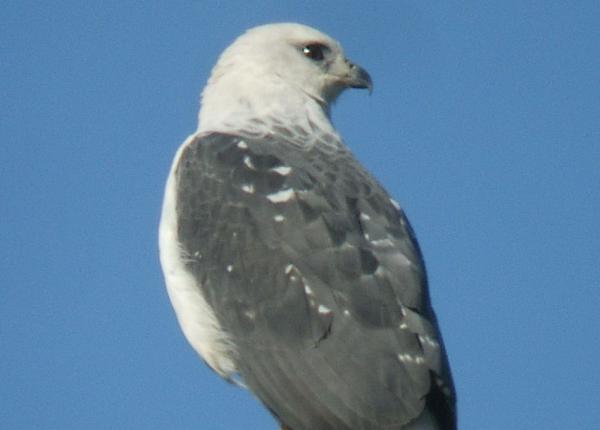Did You Know?
- The White-necked Hawk is found only in a limited range in Brazil
- This is a very poorly-studied species and scientists still have so much to learn about its hunting and nesting behavior.
How The Peregrine Fund is Helping
Though The Peregrine Fund doesn't work directly with White-necked Hawks, our efforts in scientific research, habitat conservation, education, and community development help conserve raptors on a global scale. We also supply literature to researchers from our avian research library, which helps scientists around the world gather and share important information on raptor conservation.Our work with the Neotropical Raptor Network helps conserve raptors by fostering collaboration and communication among raptor enthusiasts in the region. And, finally, our support of the Global Raptor Information Network gives raptor researchers tools to more efficiently conduct their own studies while contributing to a global program. It also provides citizen scientists a way to participate in raptor science and conservation.
Where They Live
The White-necked Hawk lives only within a limited range in Brazil. It inhabits primary forest in low and mid elevations. It has also been recorded in secondary habitats and even on the periphery of cities. This hawk has been observed perching at forest edges or soaring in wide circles over the canopy. It likely also forages in the understory to some extent.
Why They Need our Help
This species is very poorly studied, however it is considered to be a rare species within a very small range. Its principal threats are habitat destruction and direct persecution. It is categorized as a Vulnerable species.
What They Eat
The White-necked Hawk feeds on a long list of prey items. It hunts reptiles, such as snakes and lizards, amphibians, mammals, birds, and many different invertebrates such as snails, grasshoppers, stick insects, beetles ,and spiders. Like the Double-toothed Kite, this hawk also follows bands of monkeys. When the primates move through the canopy, they often flush insects, which the hawks will then hunt. These hawks will also hunt by walking along the ground, or sitting in a low perch watching for prey.
Nest, Eggs and Young
Unfortunately, biologist don't have any information on the nesting habits of this species. Where do they build their nests? How many eggs to the lay? How long do the young stay in the nest before they fledge? These and so many other questions are still waiting to be answered.
White-necked Hawk and The World Center for Birds of Prey
The World Center for Birds of Prey offers fun ways to learn about birds of prey. The visitor center offers interactive displays, tours, interesting videos and a children's room with activities from coloring sheets to quizzes to costumes and a touch table for the curious mind. We also have several different birds of prey on display year-around. Knowledgeable staff and volunteers are on hand to answer any questions you may have about White-necked Hawks or any other birds of prey.
References:
Bierregaard, R. O., G. M. Kirwan, and D. A. Christie (2020). White-necked Hawk (Buteogallus lacernulatus), version 1.0. In Birds of the World (J. del Hoyo, A. Elliott, J. Sargatal, D. A. Christie, and E. de Juana, Editors). Cornell Lab of Ornithology, Ithaca, NY, USA. https://doi.org/10.2173/bow.whnhaw2.01
Global Raptor Information Network. 2023. Species account: White-necked Hawk Leucopternis lacernulatus. Downloaded from http://www.globalraptors.org on 23 Jun. 2023









